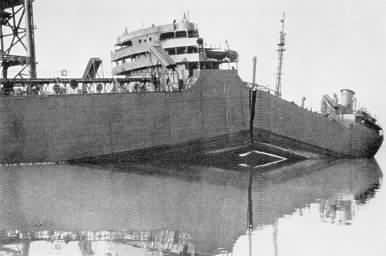 In January 1943 the one-day old T2 tanker SS Schenectady had just completed successful sea trials and returned to harbour in calm cool weather when . . .
In January 1943 the one-day old T2 tanker SS Schenectady had just completed successful sea trials and returned to harbour in calm cool weather when . . .
"Without warning and with a report which was heard for at least a mile, the deck and sides of the vessel fractured just aft of the bridge superstructure. The fracture extended almost instantaneously to the turn of the bilge port and starboard. The deck side shell, longitudinal bulkhead and bottom girders fractured. Only the bottom plating held. The vessel jack- knifed and the center portion rose so that no water entered. The bow and stern settled into the silt of the river bottom."
The ship was successfully repaired.
There were nearly five hundred T2 tankers built in US yards between 1942 and 1945, with average production time around 70 days.
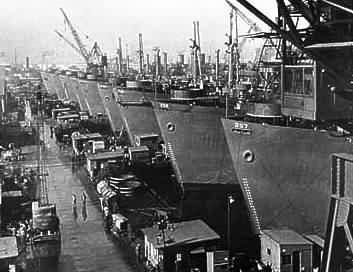
Liberty Ships were lightly armed cargo vessels built in the US for transporting desperately needed supplies across the U-boat infested Atlantic to a beleaguered Europe in WWII. Some 2700 vessels were built from 1942 until the end of the war. Such huge numbers were possible only through prefabricated all-welded construction to a standard design, together with a massive investment of capital, materials and workers. Towards the end of the programme one vessel was completed in less than five days.
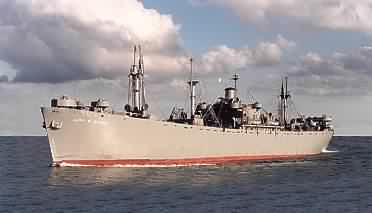
The last two Liberty Ships still afloat at the end of the century are the SS John W Brown ( pictured ) and the SS Jeremiah O'Brien ( described by Herbert Adams who presents detailed drawings of the ship laden for a trans- Atlantic crossing ).
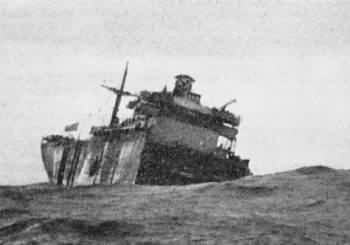
At the start of the programme some 30% of Liberty Ships suffered catastrophic fracture, though not necessarily so dramatically as the Schenectady. The stern of SS John P Gaines is pictured here after the vessel split in two off the Aleutians in 1943. As noted in Peter Thompson's website, later design changes reduced the fracture rate to 5%.
| - | the all- welded construction which eliminated crack- arresting plate boundaries which are present in riveted joints |
| - | the presence of crack- like flaws in welded joints performed by inexperienced operators pressed into service by the exigencies of the programme |
| - | the use of materials whose low resistance to crack advance ( toughness ) was further reduced by low temperatures. |
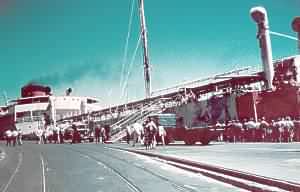 Closer to home, these photographs of the SS Bridgewater (click to enlarge), a 29,000 ton Liberian tanker, were shot by the author in Fremantle harbour early in 1962. The vessel though not a Liberty Ship broke in two after a cyclone in the Indian Ocean 400km west of Fremantle. All members of the crew were rescued, and the stern towed back to port.
Closer to home, these photographs of the SS Bridgewater (click to enlarge), a 29,000 ton Liberian tanker, were shot by the author in Fremantle harbour early in 1962. The vessel though not a Liberty Ship broke in two after a cyclone in the Indian Ocean 400km west of Fremantle. All members of the crew were rescued, and the stern towed back to port.
The first shot shows the what's left of the vessel, down at the stern and tied up at the wharf with a
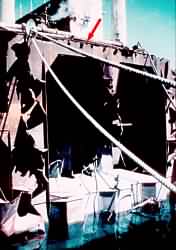 crowd of curious onlookers examining the fracture just for'ard of the ventilator.
crowd of curious onlookers examining the fracture just for'ard of the ventilator.
A close-up of portion of the transverse fracture is shown on the right. The author also was ignorant of Fracture Mechanics at the time, so the shots are perhaps not so illuminating as they might have been. However the photograph suggests strongly that the deck plating (arrowed) fractured instantaneously in a brittle fashion with none of the ductile tearing which is evident elsewhere.